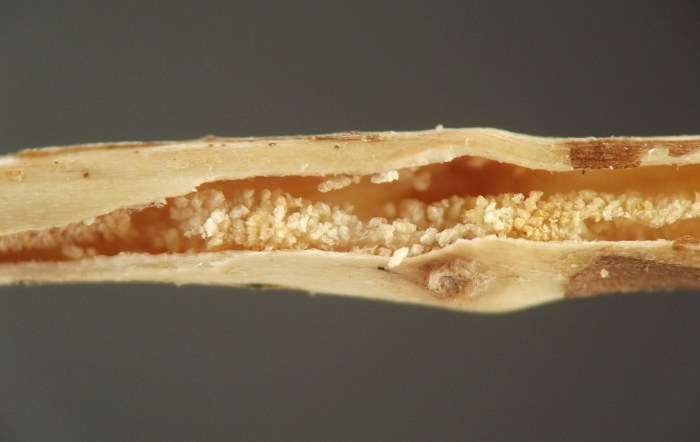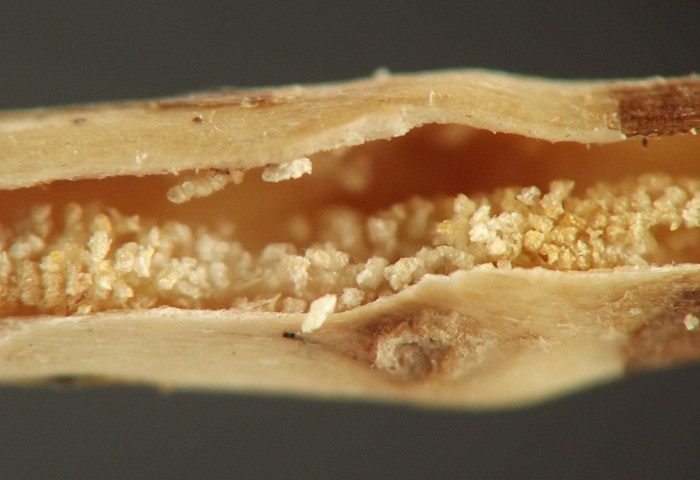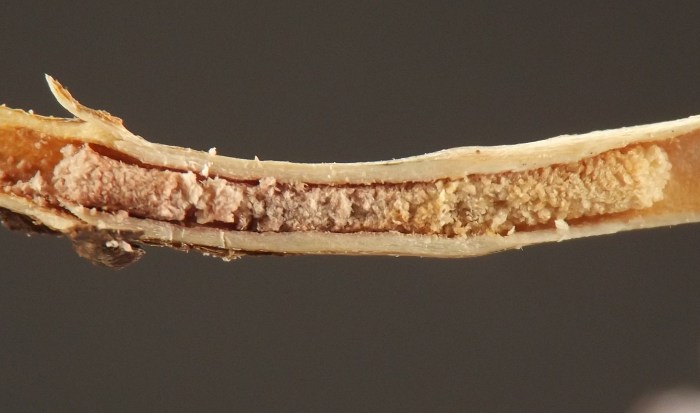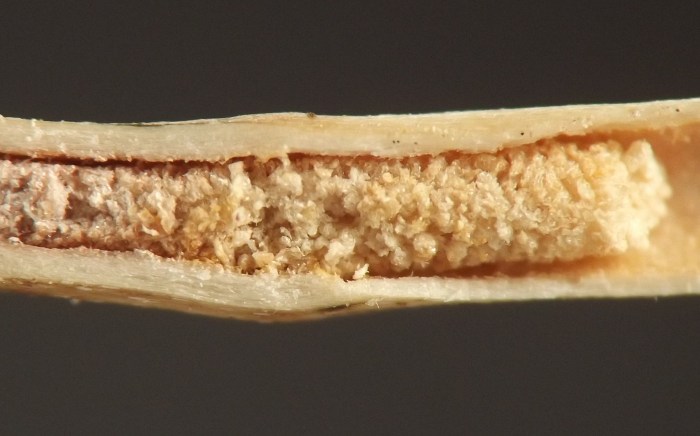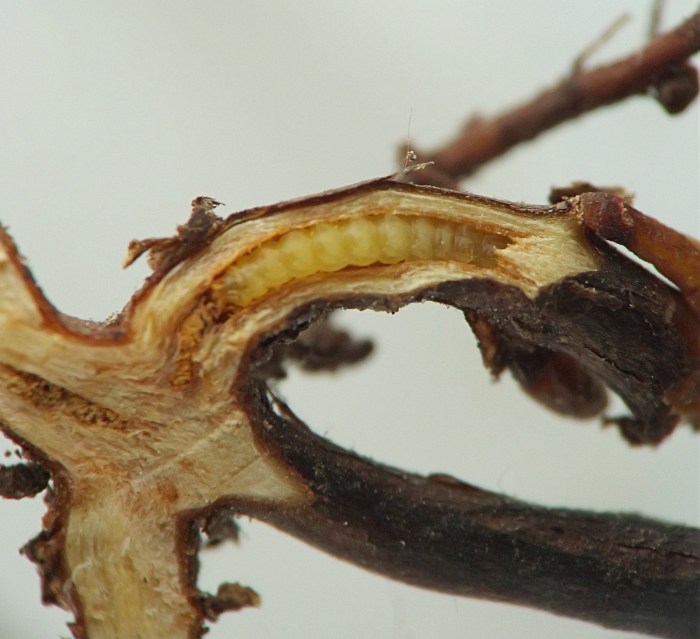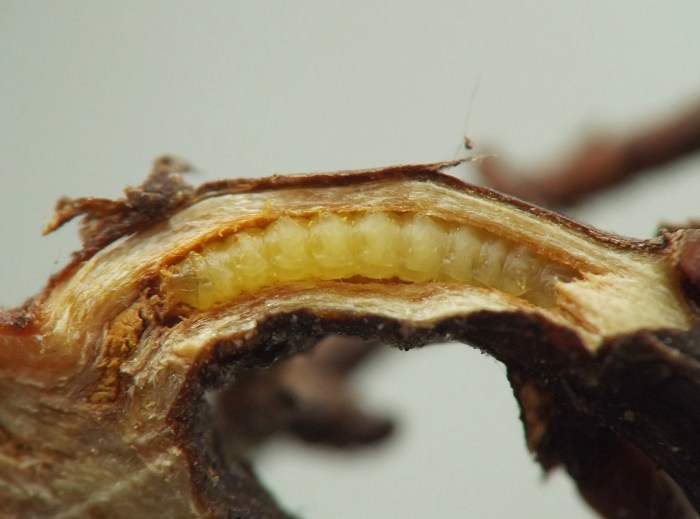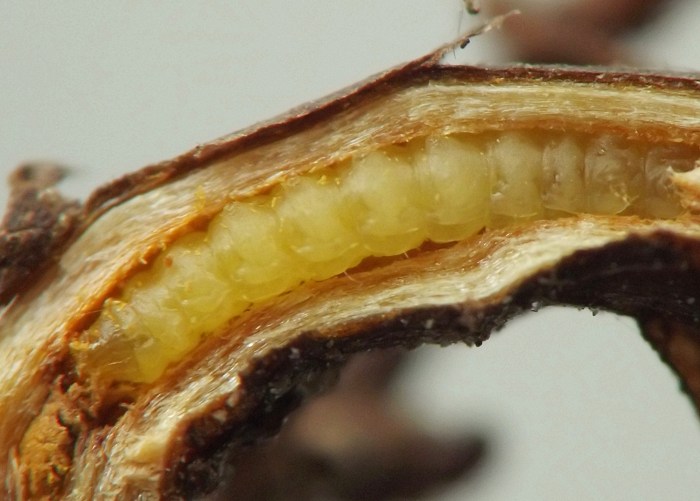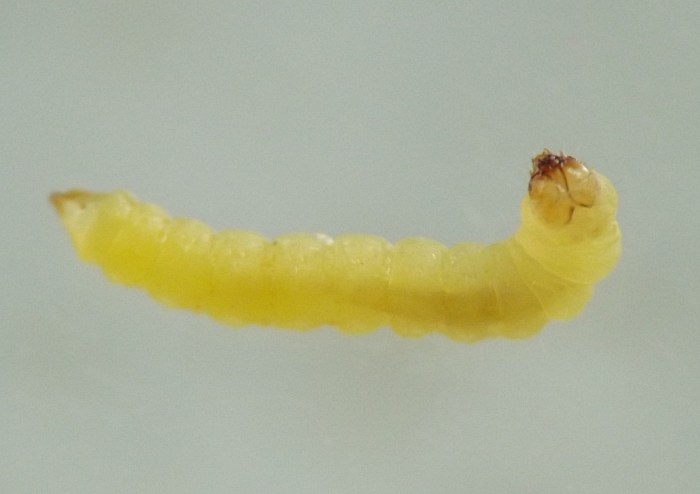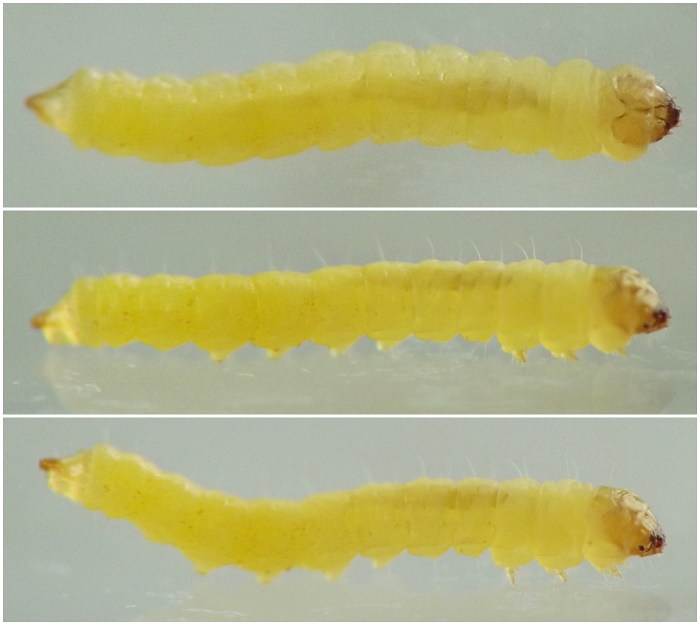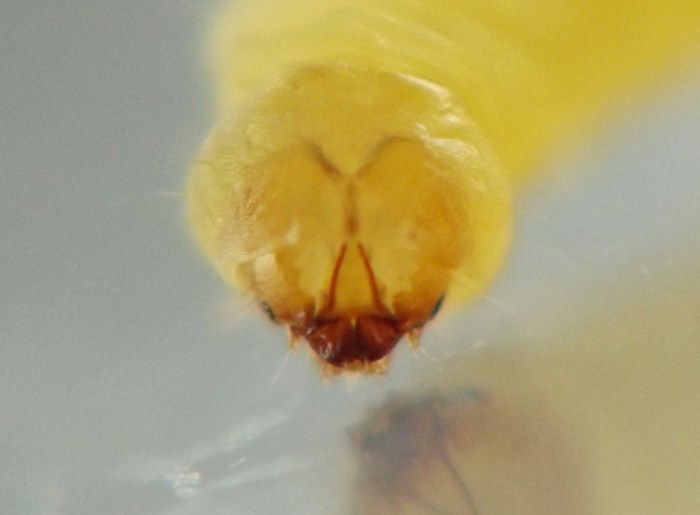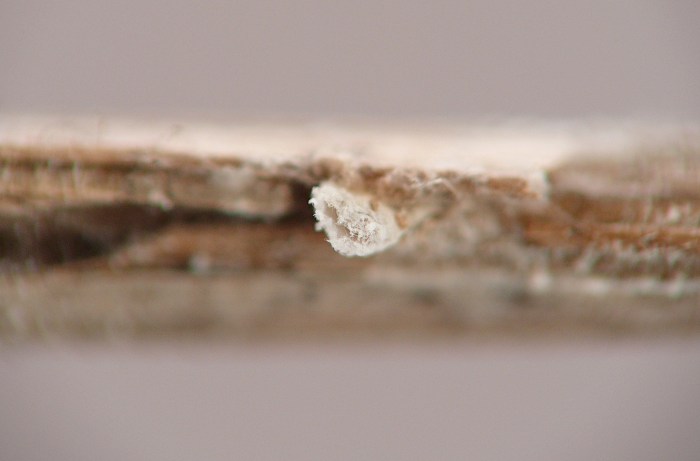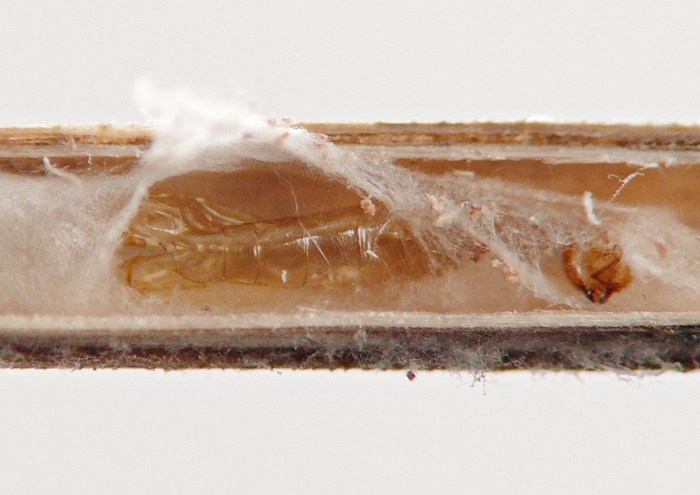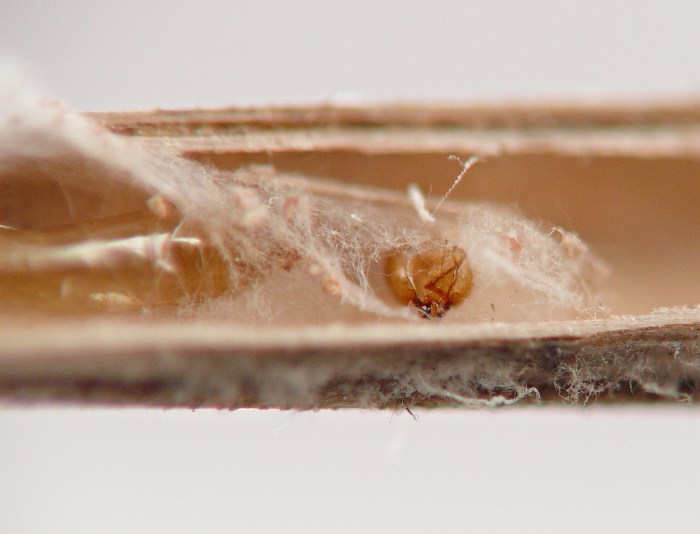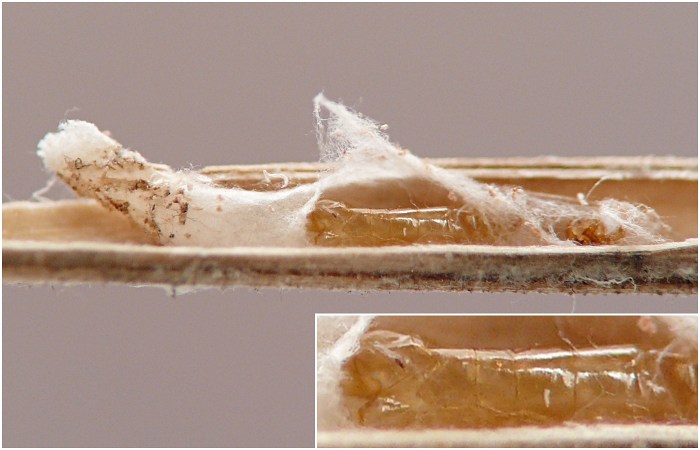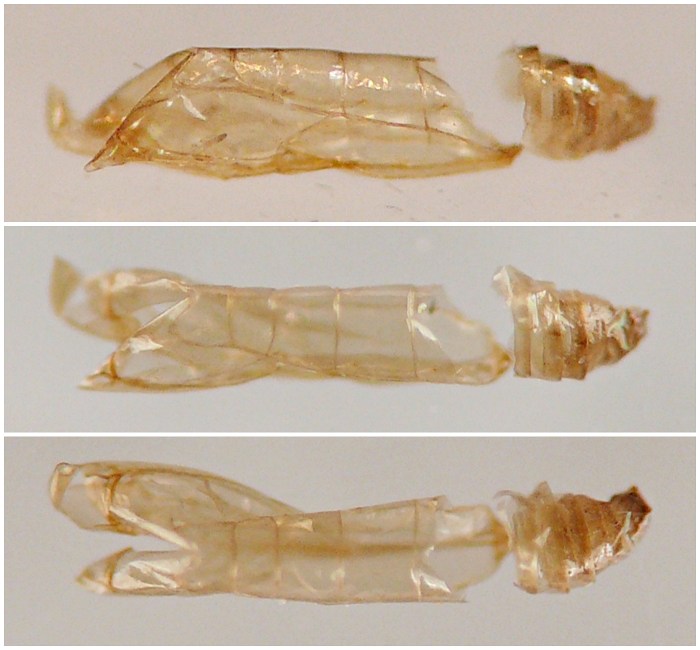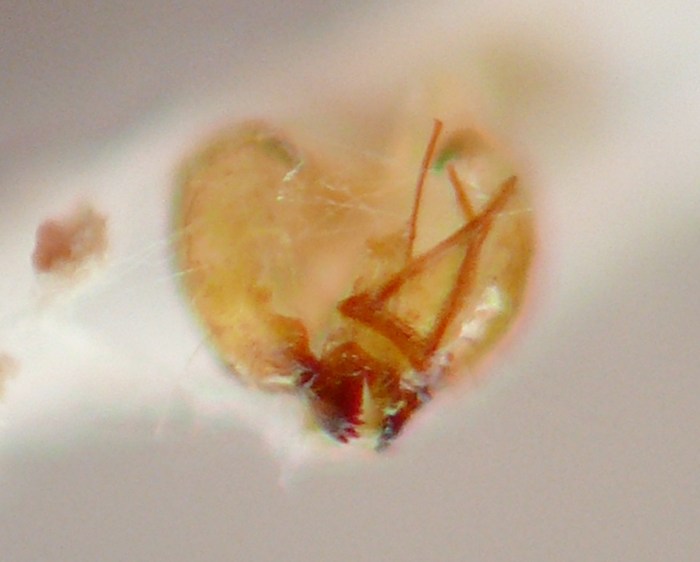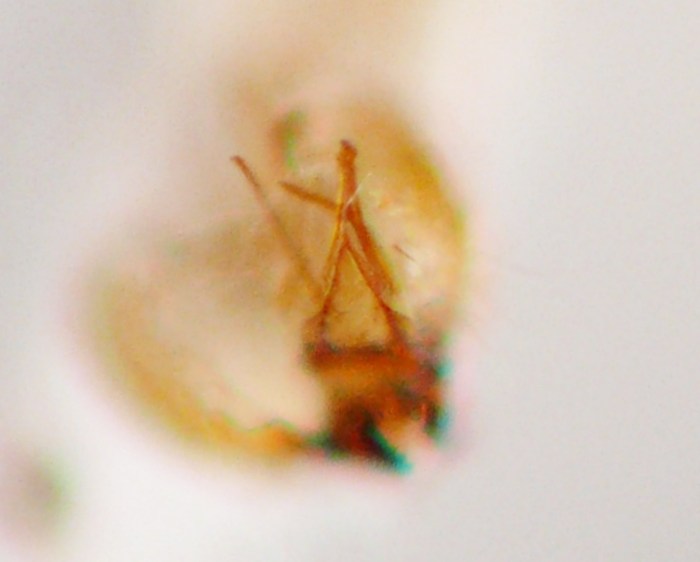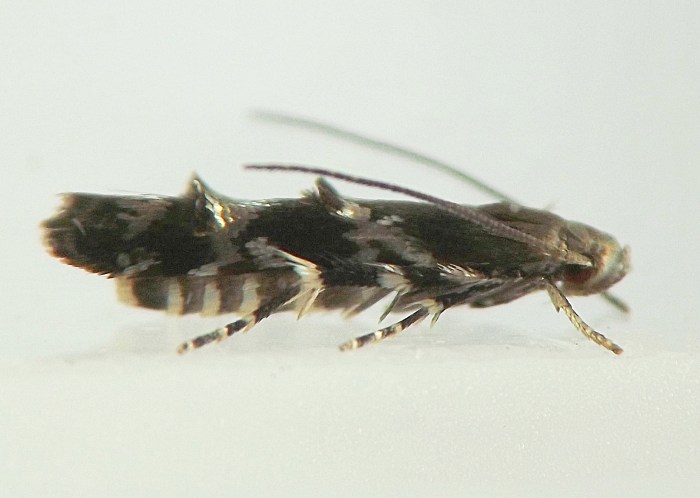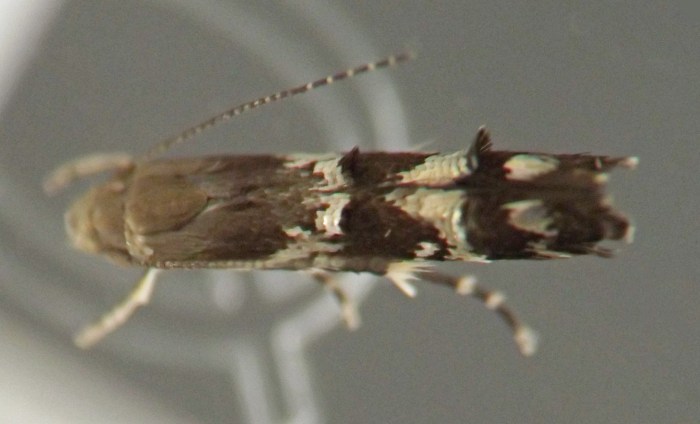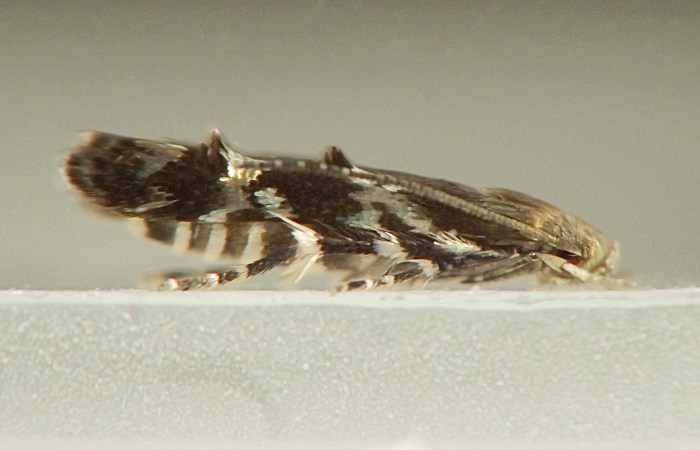Stem borer (Lepidoptera) in Galium [0656]
| Order | Lepidoptera |
|---|---|
| Family | undetermined[T,L,P,A] |
| Lower taxon | undetermined |
| No. spp. involved | One confirmed |
| Feeding mode | Stem borer |
| Host plant | Northern bedstraw, Galium boreale (Rubiaceae) |
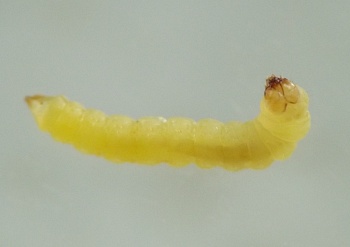
In winter, examination of senesced stems of the host plant revealed accumulated frass in the lower portions of the stems. In two cases, the frass trail was followed down to the very base of the stem, where the culprit, a Lepidoptera larva, was found overwintering in the stem interior, with its head facing upward.
One of these larvae, when retained for rearing, produced an adult moth in the spring. After the adult emerged, the affected stem was dissected and found to contain an elongate whitish cocoon. The anterior half of the cocoon curved outward and the anterior end passed through a hole the larva had cut in the stem, protruding slightly above the outer wall of the stem. An opening on this protruding end could be seen, through which the adult had emerged. The cocoon was teased open and the pupal and larval exuviae were found inside it and photographed.
The curved, elongate, whitish cocoon with the pupal exuviae retained inside (and not thrust out of the cocoon or the stem upon the adult's emergence) was similar to what was documented for Mompha luciferella from stems of Circaea lutetiana in the current study (https://insect-pages.github.io/reports/circa-StBLepMomph1.html), but the Galium borer clearly did not belong to this species. The family and genus-level identification of the Galium borer are currently unknown to the author, but moths in the genus Mompha (Momphidae) have been previously documented as internal feeders in Rubiaceae (Bruzzese et al. 2019, Harrison 2024, Wagner et al. 2004), and the Galium borer adult's plumage does appear somewhat similar to the "small 'black and white' Mompha species" figured in Harrison (2024). In their publication on momphid phylogeny, ecology, and diversification, Bruzzese et al. (2019) write: "Momphid larvae mine leaves...induce galls on plant tissue...and bore into plant tissue...Galling and boring taxa have taxonomically restricted host associations, often feeding on a single hostplant species" (p.8). With regard to the aforementioned "black and white" Mompha species, Hodges (1992) examined a number of specimens of this type from the USNM and concluded, "After dissecting males (females are not well represented) of most of the miscellaneous specimens, I find that no less than 12 species are present. Only three of them have names: metallifera, argentimaculella (Murtfeldt), and annulata (Braun). Careful study of color pattern leads me to believe that separation of these species on this basis may be impossible or extremely difficult." In that publication, Hodges described two new Mompha species from California that were similar to metallifera, but he did not formally describe the remaining species to which the miscellaneous USNM material belonged.
Examination of the Galium borer adult by a specialist will hopefully help determine its identity, at least to family or genus level.
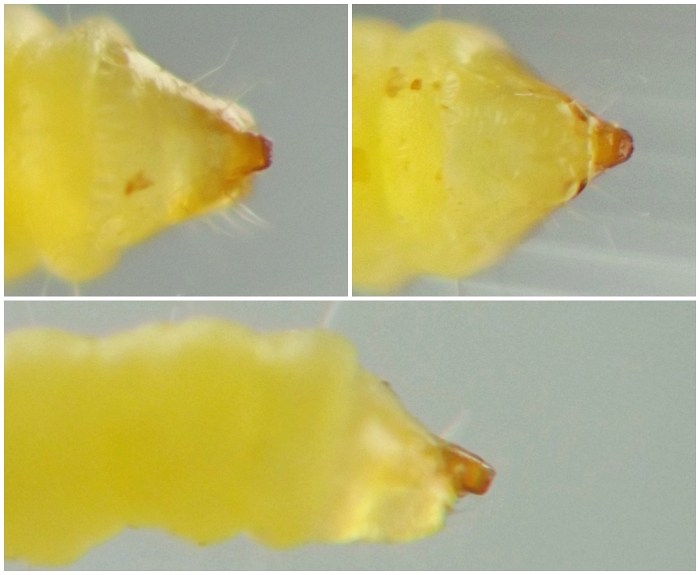

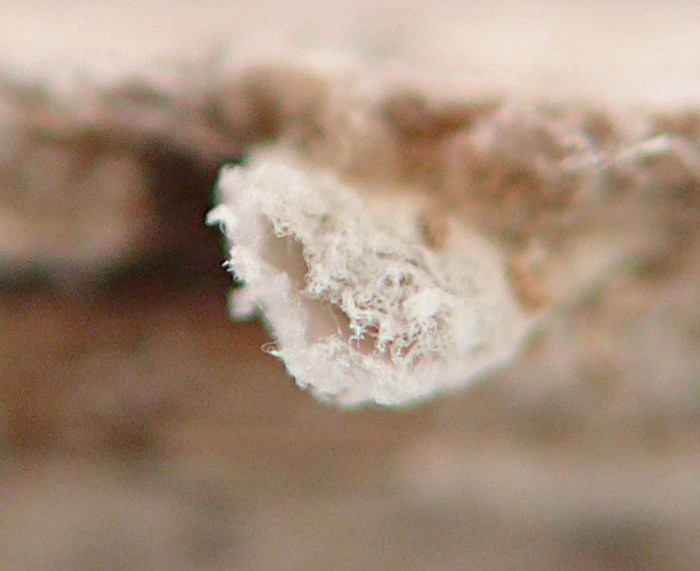
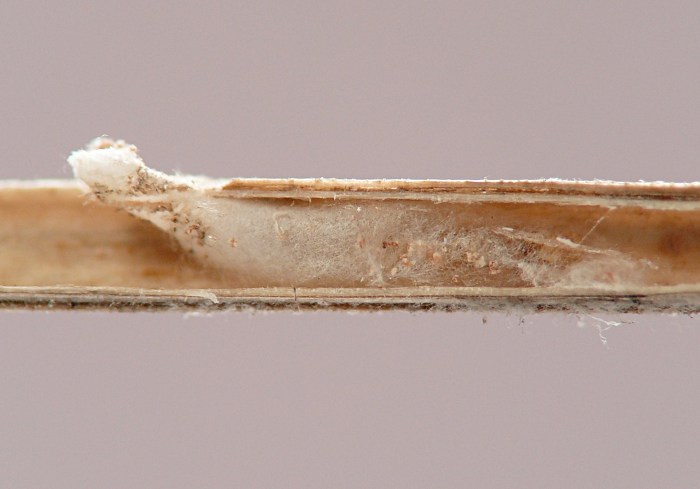
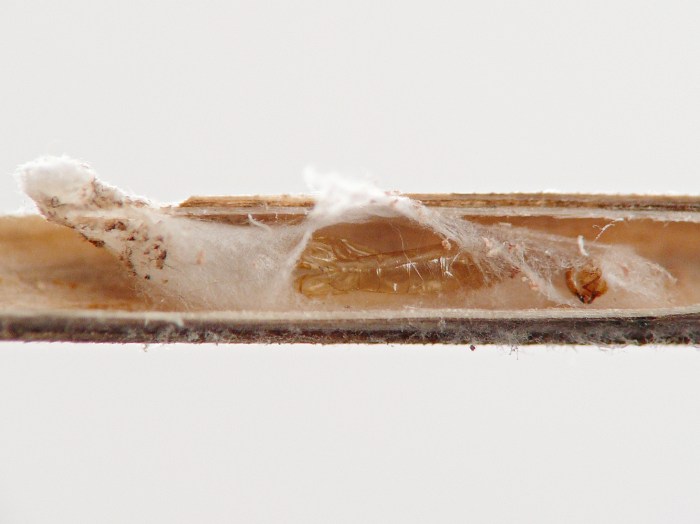
Specimen data for images
Coll. 12/14/23, stem interior with frass and larva photographed same day (01-11), adult em. ~03/29/24 and photographed same day (23-25), its stem retained and cocoon and larval and pupal exuviae photographed on 11/2x/24 (12-22).
References
Bruzzese, D.J., Wagner, D.L., Harrison, T., Jogesh, T., Overson, R.P., Wickett, N.J., Raguso, R.A., and K.A. Skogen. 2019. Phylogeny, host use, and diversification in the moth family Momphidae (Lepidoptera: Gelechioidea). PLoS ONE 14(6): e0207833. https:// doi.org/10.1371/journal.pone.0207833.
Harrison, T. 2024. Family Momphidae. On Microleps.org [website]. Retrieved November 25, 2024 from http://www.microleps.org/Guide/Momphidae/index.html.
Hodges, R.W. 1992. Two new species of Mompha from California (Lepidoptera: Momphidae). J. New York Entomol. Soc. 100(2): 203-208.
Wagner, D.L., Adamski, D., and R.L. Brown. 2004. A new species of Mompha Hübner (Lepidoptera: Coleophoridae: Momphinae) from buttonbush (Cephalanthus occidentalis L.) with descriptions of the early stages. Proc. Entomol. Soc. Wash. 106(1): 1-18.
Page created 11/25/24. Last update: [none]
